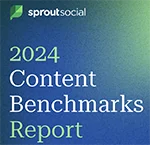 Jon Gingerich Jon Gingerich |
It’s a paradox for the age: How could a world in which information is so readily available account for such an information-poor environment?
I’m guessing the early Internet’s pioneers never imagined the infinite library they envisioned would be packed to the gunwales with bad content. Clickbait, outrage bait, fake news, mindless listicles, hyperpartisan media theater masquerading as political analysis. In 2019, our information highway resembles an information trash heap.
We can debate how things got this way, like how the search engines and social media networks siphoned the ad revenues away from the newsrooms that kept us informed. But consider this: while the information at our fingertips is infinite, there’s one thing that’s definitely in short supply: the time we have to consume it all. As a result, the app makers, streaming services, media companies and social media platforms are competing for our limited attention. And they’re incentivized to keep feeding the machine with junk because that’s the content that gets the clicks. The problem isn’t just them. It’s us too.
Perhaps it’s for this reason that, despite an information surplus, our media vocabulary remains alarmingly stunted, even among young digital natives who were raised with the web: 80 percent of middle-schoolers today can’t tell the difference between native ads and news articles, according to a study conducted by Stanford University.
The Internet is how we relax, it’s how we socialize. For many of us, it also means we’re constantly connected to our jobs. We’re glued to our devices 24/7; the average smartphone user touches their phones 2,617 times a day, according to a dscout report. Our attention spans are shot. We’re vulnerable to data breaches. And as it turns out, staring at screens all day poses its share of health problems, too. We suffer from increased rates of depression and anxiety. We aren’t sleeping enough. An estimated six percent of us have become literally addicted to the technology we depend on. Month-long social media “cleanses” have become one of the fads du jour. Psychologists offer practices specializing in tech-addiction therapy. Digital “detox” retreats are now a cottage industry.
We’ve lost control over what role technology was supposed to play in our lives. Perhaps it’s for this reason that a majority of Americans (70 percent) are now interested in the idea of “switching off,” Consumers Worried About Digital Media’s Health Effects. Face it: this isn’t what we ordered. We wanted to be connected, informed, but in many ways, technology has become more of an impasse than a gateway. We’re dumber. We aren’t living in the moment. We’re in a state of perpetual distraction. We’re more ideologically divided, driven into hermetic tribes that merely echo our worldviews. The experiment has failed. And now, some of us want to escape this dystopian nightmare we’ve found ourselves in—or at least have a meal uninterrupted by our phones.
A prediction: I think the concept of disconnection will become a dominant theme next year. People crave presence. They want authentic, analogue experiences. They want to disentangle themselves, minimize tech overload, and you can bet the market will respond to our growing desires to unplug, or at least shrink our digital footprint, in 2020 and beyond.
Consider some of the products that’ve appeared on shelves in the last year. There’s the Light Phone, a cellphone with an e-ink display that doesn’t provide web access or apps (only phone calls, texts and an alarm clock). There’s the Freewrite, a Wi-Fi-enabled, “distraction-free” keyboard that mimics the typewriter technology of yesteryear so writers can’t be tempted to go online. There’s wearable technology that notifies users of incoming calls and texts so we don’t have to keep phones handy. Ironically, a slew of smartphone apps has hit the market that track screen time and app usage or even temporarily block specific apps, sites or Internet access altogether. A quick jog online shows retailers are now even selling ridiculous “digital detox kits,” which include a pouch to store your phone, an eye mask and ear plugs. Some even come with a “fidget cube” so, God forbid, you can have something to do with your hands.
Some of this stuff is nonsense, modern snake oil promising some bespoke “spiritual” experience to the act of logging off. But if necessity is the mother of invention, the prevalence of these products in the market speaks to their demand. We’ve reached a historic moment when the purpose of much of today’s new technology isn’t to offer new solutions as much as recreate the world we willfully replaced. But here’s the thing: I don’t think we’re suffering from analogue nostalgia nearly insomuch as we’re simply craving another kind of experience. As it turns out, people like reality.
“Man is by nature a social animal,” Aristotle wrote, and “an individual who is unsocial naturally … is either beneath our notice or more than human.” It deserves to be said: our use of the word “disconnection” here is a misnomer. The offline world is a highly social place. Certainly, compare it to social media, which confirms many of us aren’t dealing with anything resembling reality at all, and it’s no wonder research shows people who deactivate their social media accounts report improved mood and fewer distractions. People are logging off because they want deeper connections, not in spite of them. We’ve just learned that when it comes to setting boundaries, that’s a strictly do-it-yourself job.


 What if companies could harness the fury of online outrage into a force for good? This is precisely where companies can start turning the trolls into brand champions.
What if companies could harness the fury of online outrage into a force for good? This is precisely where companies can start turning the trolls into brand champions. Audiences interacted with brand content far more often on Facebook and Instagram in 2023 than they did via X (formerly Twitter), according to a report that tracked engagement trends across different social networks.
Audiences interacted with brand content far more often on Facebook and Instagram in 2023 than they did via X (formerly Twitter), according to a report that tracked engagement trends across different social networks. Can public relations help counteract the dissension fostered by the power of digital platforms to spread hate, fear and confusion?
Can public relations help counteract the dissension fostered by the power of digital platforms to spread hate, fear and confusion? The number of Americans who get their news from TikTok has quadrupled in the last three years, according to a recent Pew Research Center report.
The number of Americans who get their news from TikTok has quadrupled in the last three years, according to a recent Pew Research Center report.


 Have a comment? Send it to
Have a comment? Send it to 
No comments have been submitted for this story yet.